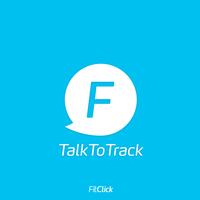Millennials are Shaping the Future of Health Apps
What comes to mind when you think of millennials? Are you reminded of stereotypes about this generation’s apathy? Self-serving nature? Tendency to be too self-involved? While the validity of these stereotypes is debatable, what you may not associate with millennials is their role as leaders of our nation’s health and wellness culture, particularly when it comes to mobile health (mHealth) apps. This burgeoning segment of the population is investing more time and energy into mHealth apps than any other in the country. In fact, studies find that Americans aged 25-34 are clearly the most frequent users of mHealth apps and that female millennials specifically spend 200% more time on health and fitness apps than all other users. In short, millennials can be considered the driving force behind mHealth apps.
For this generation, interest in mHealth apps stems largely from an increased interest in improving overall health and well-being. According to a recent study, 66% of college students now regularly monitor their calorie intake, while 69% monitor their sugar intake. What’s more, now 50% want as much quantifiable data about their health as possible. This new, heightened interest explains in part why millennials are so attracted to technologies that allow them to access detailed information about their own health.
In addition, they are also attracted to mHealth apps more than other segments of the population because they’re digital natives. Millennials have grown up in a world in which data is abundant and instantly accessible, and so technology that allows real-time access to health information, such as mobile calorie trackers, stands out as more advantageous than other “analog” health improvement options.
*******************************************************************
A Message from Our Sponsor: Are you, or is someone you love an MS patient on Medicare in need of financial assistance? Click here to visit the HealthWell Foundation’s eligibility page.
*******************************************************************
Millennials are also uniquely inclined to use mHealth apps because most entered adulthood in the midst of an economic recession, and have since developed views about spending that have earned them the nickname, “The Cheapest Generation.” While their parents may be investing in $200 juicers and a slew of fitness DVDs, millennials are seeking out inexpensive options to health and fitness like mobile apps, many of which can be downloaded for free.
What’s more, millennials also prioritize convenience and expediency. They’re fast-paced, often overscheduled individuals who aren’t as likely to slow down for things like manually counting calories or monitoring levels of physical activity throughout the day. A mHealth app that’s always on hand and offers some level of automation is therefore the millennial’s ideal solution.
Mobile health apps are expected to exceed $3 billion in global sales by 2019, and already maintain approximately 60 million American users. There are also over 100,000 apps on Google Play and Apple’s iOS app store, a quantity that’s doubled in just 2.5 years. Given that millennials are the most active segment of health app users, and that they’ll soon surpass baby boomers in terms of consumer purchasing power, we can only expect that going forward, health apps will be tailored to millennial preferences.
Specifically, we can expect that mHealth apps will significantly expand in their breadth of function. Mobile apps of the future will focus on tracking even more specific fitness and nutrition information to satisfy the millennial’s penchant for quantifiable data, and will therefore be viewed as a more comprehensive and long-term solution to monitoring and improving health.
As mHealth apps improve their ability to track more data, they’ll also be better positioned as a valuable resource for patient-doctor discussions. There’s already talk of how health care services are (and will continue to be) leveraged in a digital or mHealth environment; advanced mHealth apps may figure as natural supplements to this forthcoming digital doctor-patient interaction that helps put patients at the center of care. Ultimately, we can expect to witness a transition in which health apps become resources that aid patient discussions about health.
Additionally, we should also expect mHealth apps to focus on automation. How can nutrition and fitness tracking be made instantaneous? Because millennials are all about ease of use, apps that minimize a user’s time and effort will thrive. Already apps like FitClick’s Talk-to-Track App are making headway by allowing users the ability to simply state what they eat to track calories and nutrition, rather than manually type in food items and quantities or scroll through long lists of options.
Finally, don’t be surprised if mHealth apps integrate more social components that make tracking nutrition and fitness a more communal experience with new opportunities for peer connection. Social networking continues to influence even the most unlikely of consumer markets, and because long-term nutrition and fitness tracking largely depends on sustained motivation, a social component could offer millennials the right type of motivation to ensure they maintain interest in their health and wellness goals.
Ultimately, we can expect that health care will be significantly shaped by the development of technologies like mHealth apps, and that these technologies will reflect the priorities of their most ardent users, millennials.
Are you a Millennial using health and fitness apps to stay healthier? Tell us about your favorites in the comments.

















